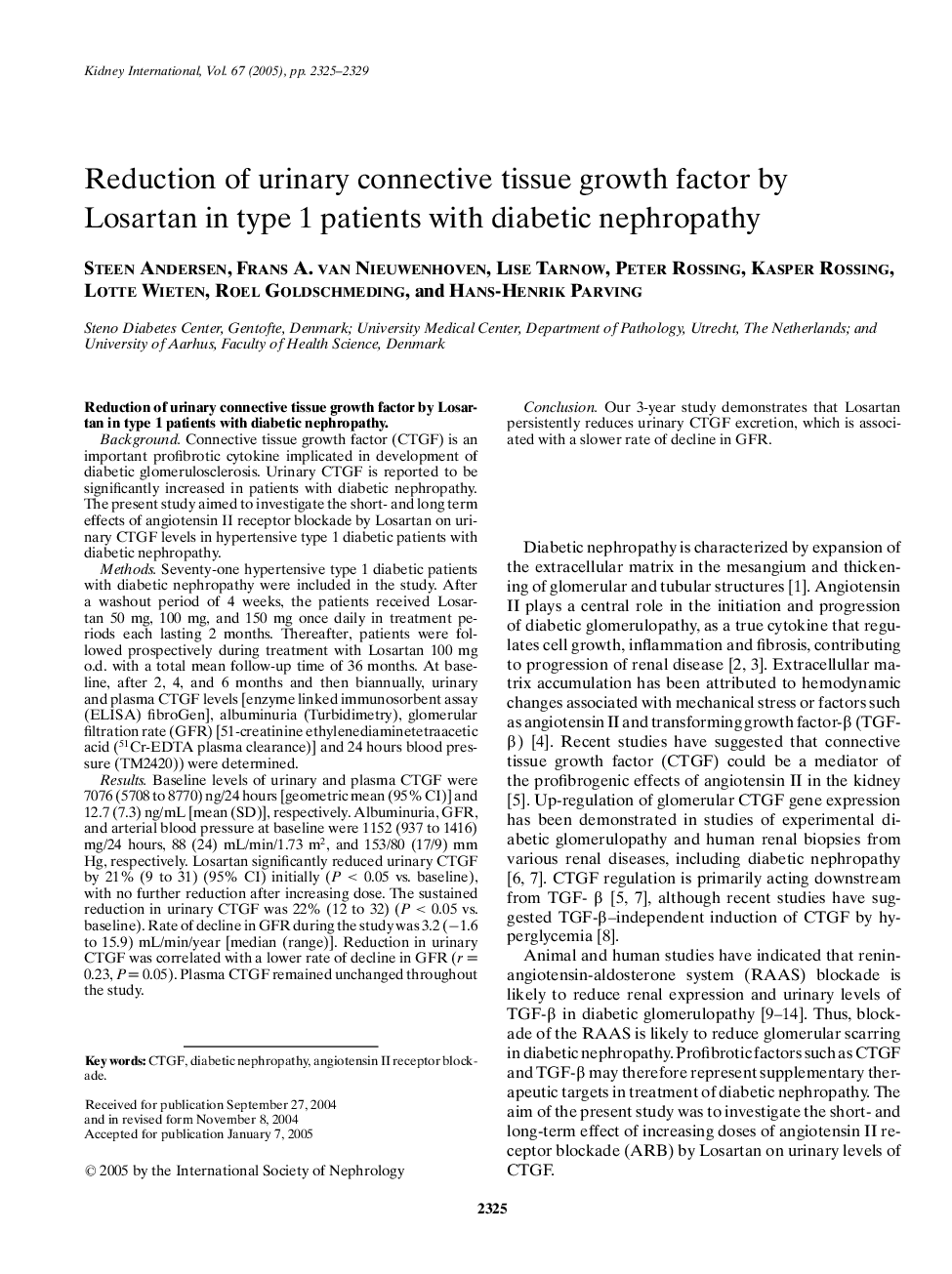| کد مقاله | کد نشریه | سال انتشار | مقاله انگلیسی | نسخه تمام متن |
|---|---|---|---|---|
| 3890247 | 1249710 | 2005 | 5 صفحه PDF | دانلود رایگان |

Reduction of urinary connective tissue growth factor by Losartan in type 1 patients with diabetic nephropathy.BackgroundConnective tissue growth factor (CTGF) is an important profibrotic cytokine implicated in development of diabetic glomerulosclerosis. Urinary CTGF is reported to be significantly increased in patients with diabetic nephropathy. The present study aimed to investigate the short- and long term effects of angiotensin II receptor blockade by Losartan on urinary CTGF levels in hypertensive type 1 diabetic patients with diabetic nephropathy.MethodsSeventy-one hypertensive type 1 diabetic patients with diabetic nephropathy were included in the study. After a washout period of 4 weeks, the patients received Losartan 50 mg, 100 mg, and 150 mg once daily in treatment periods each lasting 2 months. Thereafter, patients were followed prospectively during treatment with Losartan 100 mg o.d. with a total mean follow-up time of 36 months. At baseline, after 2, 4, and 6 months and then biannually, urinary and plasma CTGF levels [enzyme linked immunosorbent assay (ELISA) fibroGen], albuminuria (Turbidimetry), glomerular filtration rate (GFR) [51-creatinine ethylenediaminetetraacetic acid (51Cr-EDTA plasma clearance)] and 24 hours blood pressure (TM2420)) were determined.ResultsBaseline levels of urinary and plasma CTGF were 7076 (5708 to 8770) ng/24 hours [geometric mean (95% CI)] and 12.7 (7.3) ng/mL [mean (SD)], respectively. Albuminuria, GFR, and arterial blood pressure at baseline were 1152 (937 to 1416) mg/24 hours, 88 (24) mL/min/1.73 m2, and 153/80 (17/9) mm Hg, respectively. Losartan significantly reduced urinary CTGF by 21% (9 to 31) (95% CI) initially (P < 0.05 vs. baseline), with no further reduction after increasing dose. The sustained reduction in urinary CTGF was 22% (12 to 32) (P < 0.05 vs. baseline). Rate of decline in GFR during the study was 3.2 (-1.6 to 15.9) mL/min/year [median (range)]. Reduction in urinary CTGF was correlated with a lower rate of decline in GFR (r = 0.23, P = 0.05). Plasma CTGF remained unchanged throughout the study.ConclusionOur 3-year study demonstrates that Losartan persistently reduces urinary CTGF excretion, which is associated with a slower rate of decline in GFR.
Journal: Kidney International - Volume 67, Issue 6, June 2005, Pages 2325–2329